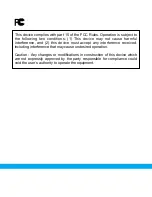
77
77
Program description:
Transmitter controls
Stick mode
Settings for transmitter sticks 1 to 4
Pitch/thr
Roll
0.0s 0.0s
Pitch ax.
0.0s 0.0s
Tail rot.
0.0s 0.0s
Tr.step
SYM ASY
SEL
Thr Lim
global
global
global
Trim
4
4
4
4
0.0s 0.0s
– time +
SEL
This menu is intended for model helicopters only, and
is used to determine the trim effect of the four digital
trim levers, and to “slow down” the effect of sticks 1 to
4 if desired.
Move to the relevant line with the rotary control
pressed in. Select the appropriate function fi eld, press
the rotary control briefl y, then enter the desired set-
ting in the highlighted fi eld using the rotary control.
“Trim” column
The set-up variations available at this point are tailo-
red to the requirements of model helicopters, which is
why it is possible in the “Pitch / throttle” line to switch
between the following points:
“Thr Lim”:
The C1 trim works as an idle trim if the
motor is controlled using the “Throttle li-
mit” function for the starting procedure
(see the »
Transmitter control adjust
«
menu (page 82).
“Thr AR”:
The C1 trim works as an idle trim only in
the “Autorot” fl ight phase.
In principle the AR throttle position is set
(permanently) in the »
Helicopter mi-
xers
« menu (page 122), but it can be
“varied” using the idle trim lever, e. g. for
auto-rotation practice.
Pressing
CLEAR
resets this parameter to “Thr Lim”.
In contrast, the trim effect of the associated digital
trim levers can be switched from “global” to “phase” in
the “Roll”, “Pitch-axis” and “Tail rotor” lines, and vice
versa.
“global”:
The setting of the trim lever affects the
corresponding model over all the pro-
grammed fl ight phases, i. e. its effect is
“global”.
“phase”:
The setting of the trim lever affects the
model differently in each fl ight phase,
and the settings are automatically stored
when you switch fl ight phases, so that
the established setting is again available
when you switch back.
Pressing
CLEAR
resets this parameter to “global”.
“Tr.step” column
The four digital trim levers shift the neutral point of the
relevant stick function by one increment every time
you push (“click”) the trim lever in either direction. The
size of the increment can be varied in this menu; the
maximum trim value is always about +/-30% of the
control travel, regardless of the number of trim incre-
ments applied.
Hold the rotary control pressed in to select the appro-
priate line. Press the rotary control briefl y, then set a
value within the range 1 to 10.
(pressing
CLEAR
= 4)
“- time +” column
In the “-time+” column it is possible to infl uence the
speed of movement of servos controlled by sticks 1 to
4; the response speed is variable separately for each
stick. The associated servo or servos still follow the
travel of the transmitter control, but with a correspon-
ding delay. This time delay affects the transmitter con-
trol signal directly, and therefore infl uences all servos
controlled by the particular transmitter control at the
same rate.
The time can be programmed
SYM
metrically (for both
sides) or separately for each direction of movement
(
ASY
); the available range is 0 to 9.9 seconds. For
asymmetrical adjustment move the stick to the appro-
priate side, so that the highlighted fi eld – in which the
desired value is to be entered – switches between the
two directions.
(
CLEAR
= 0.0 s.)
Typical application:
At the swashplate linkage point in the »
Helicopter
type
« menu (see page 72), for example, a “pitch-axis”
(elevator) command will move all three servos if the
linkage type is set to “3Sv (2 roll)”. However, the servo
in the centre has to cover a longer travel than the two
servos acting on the shorter levers.
If a fast pitch-axis command is given, the servo in
the centre will reach its end-point later than the two
other servos acting on the shorter levers. The result
is a brief collective pitch movement. If the time for the
pitch-axis function is reduced to the point where it
corresponds at least to the transit speed of the centre
servo, then all three servos will always reach the desi-
red point simultaneously. Therefore if you set a delay
value for “Collective pitch” (C1), it is possible to obtain
absolutely identical transit speeds for the three collec-
tive pitch servos. The delay times required for this are
typically only a few tenths of a second.
Summary of Contents for mx-24s
Page 1: ...1...
Page 19: ...19 For your notes...
Page 35: ...35 For your notes...
Page 41: ...41 41 For your notes...
Page 57: ...57 For your notes...
Page 63: ...63 63 For your notes...
Page 69: ...69 69 For your notes...
Page 85: ...85 85 For your notes...
Page 99: ...99 For your notes...
Page 143: ...143 For your notes...
Page 191: ...191 For your notes...
Page 212: ...212 212 For your notes...
Page 213: ...213 213 For your notes...
Page 214: ...214 For your notes...
Page 216: ...216...
















































